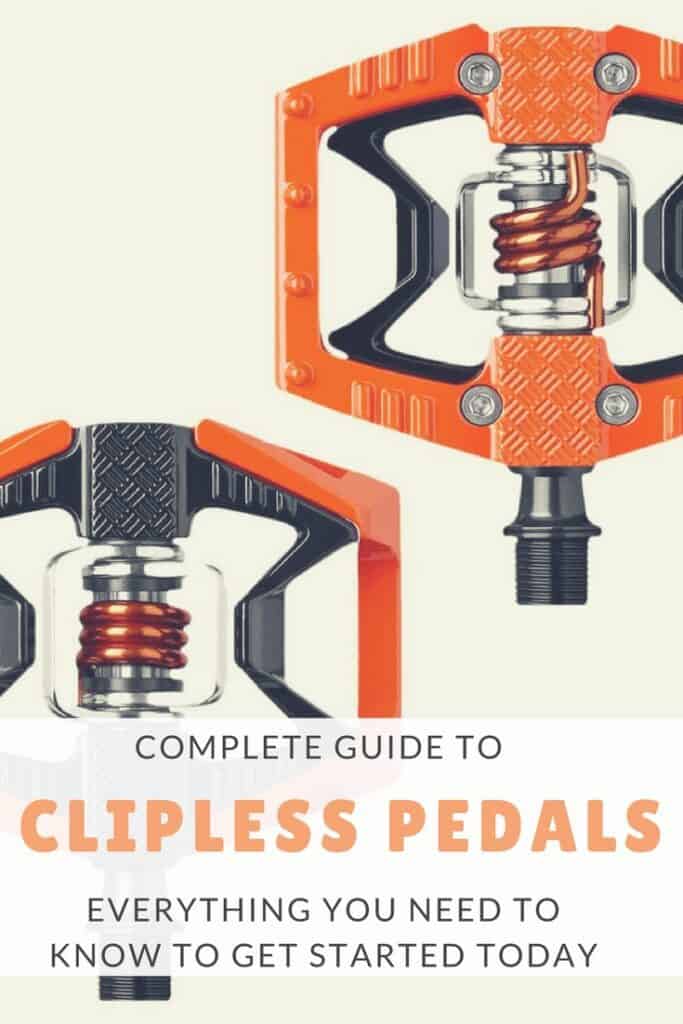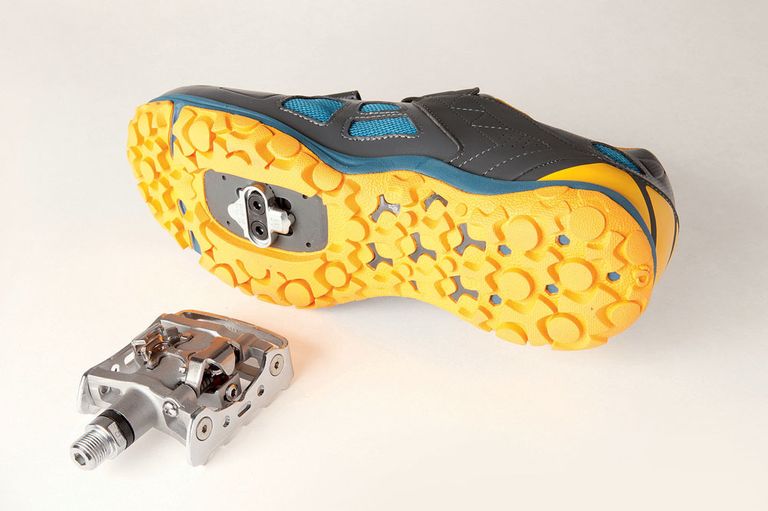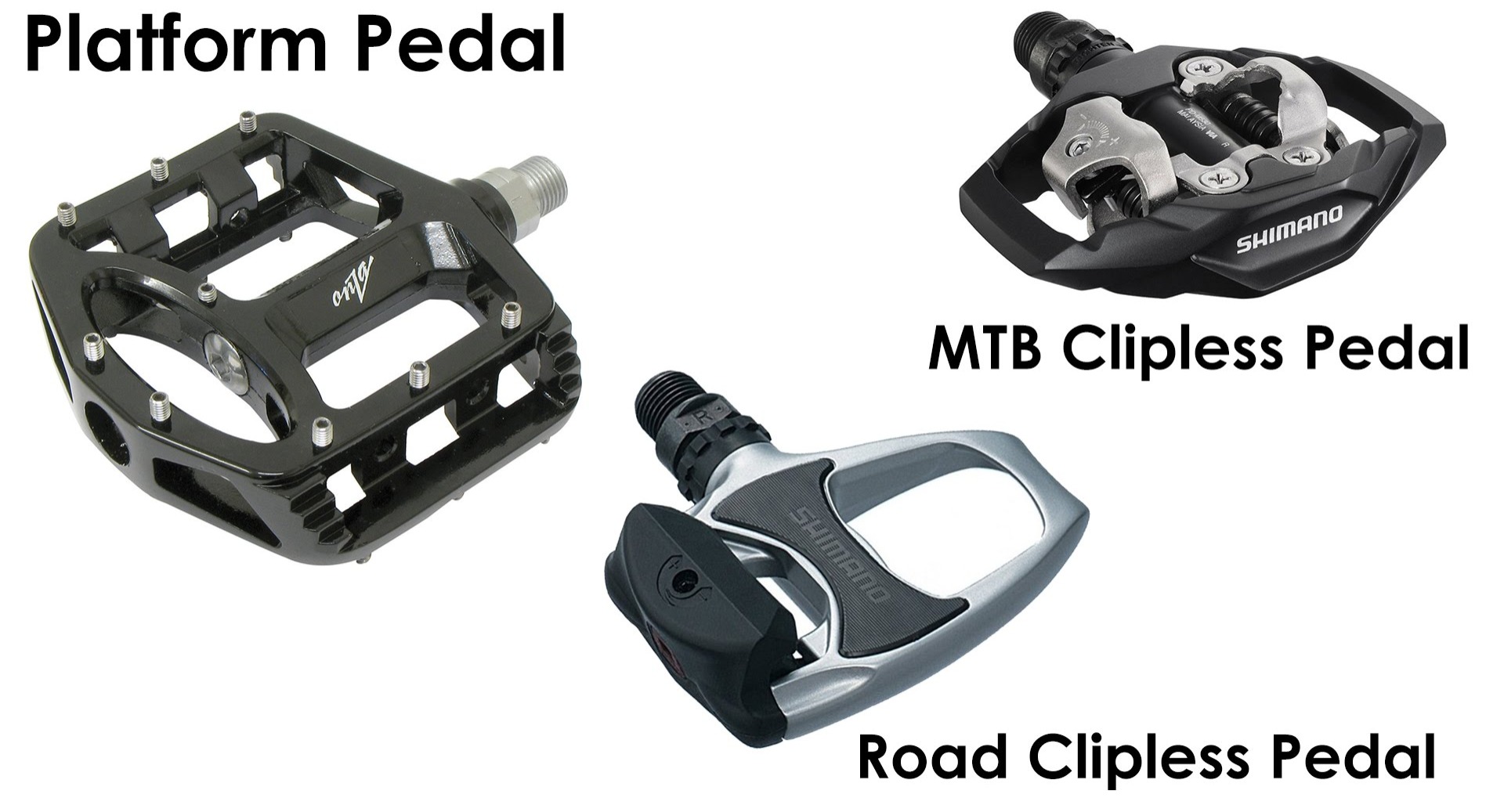What are Clipless Pedals and How Do They Work?
Clipless pedals, also known as clip-in pedals, are a type of bicycle pedal that allows riders to securely attach their shoes to the pedal platform. Unlike traditional platform pedals, clipless pedals use a mechanical system to hold the foot in place, providing a more efficient and safe riding experience. But how do clip in pedals work?
The basic components of clipless pedals include the pedal body, cleat, and spring mechanism. The pedal body is the main platform that the rider’s foot rests on, while the cleat is a small device attached to the sole of the shoe that engages with the pedal. The spring mechanism is responsible for holding the cleat in place, providing the necessary tension to keep the foot securely attached.
When a rider steps onto the pedal, the cleat engages with the pedal body, and the spring mechanism clicks into place, securing the foot. This mechanical system allows for a more efficient transfer of power from the rider’s legs to the pedals, resulting in improved pedaling efficiency and reduced foot fatigue.
Clipless pedals also provide improved safety features, such as a more secure connection between the foot and pedal, reducing the risk of accidental disengagement. Additionally, clipless pedals allow riders to customize the fit and feel of their pedals, with adjustable tension and float settings to suit individual preferences.
Understanding how clipless pedals work is essential for riders looking to upgrade their pedaling experience. By grasping the mechanics behind clipless pedals, riders can unlock the full potential of their pedals and enjoy a more efficient, safe, and enjoyable ride.
The Benefits of Using Clipless Pedals: Improved Efficiency and Safety
Clipless pedals offer a range of benefits that can enhance the overall riding experience. One of the primary advantages of using clipless pedals is improved pedaling efficiency. By providing a secure connection between the foot and pedal, clipless pedals allow for a more efficient transfer of power from the rider’s legs to the pedals. This results in increased speed, reduced fatigue, and improved overall performance.
In addition to improved efficiency, clipless pedals also provide enhanced safety features. The secure connection between the foot and pedal reduces the risk of accidental disengagement, which can be a major concern for riders. This is particularly important for riders who engage in high-speed or high-risk activities, such as downhill mountain biking or competitive road racing.
Clipless pedals also offer improved comfort and reduced foot fatigue. By allowing the foot to be securely attached to the pedal, clipless pedals reduce the strain on the foot and ankle, resulting in improved comfort and reduced fatigue. This is particularly beneficial for riders who engage in long-distance or high-frequency riding activities.
Furthermore, clipless pedals provide a range of customization options, allowing riders to fine-tune their pedaling experience. Adjustable tension and float settings enable riders to customize the fit and feel of their pedals, ensuring a comfortable and efficient ride.
Understanding how clipless pedals work and how to properly use them is essential for unlocking their full potential. By grasping the benefits and advantages of clipless pedals, riders can take their riding experience to the next level and enjoy improved efficiency, safety, and comfort.
How to Choose the Right Clipless Pedals for Your Riding Style
With the numerous options available, selecting the right clipless pedals for your riding style can be a daunting task. However, by considering a few key factors, you can make an informed decision and find the perfect pedals for your needs.
First and foremost, consider the type of riding you will be doing most often. Road biking, mountain biking, and commuting all require different types of pedals, with varying levels of float, cleat compatibility, and pedal platform size.
For road biking, look for pedals with a low profile and a narrow platform, such as the Shimano SPD-SL or Look Keo. These pedals provide a high level of efficiency and aerodynamics, making them ideal for high-speed riding.
For mountain biking, consider pedals with a wider platform and more float, such as the Shimano SPD or Crank Brothers Candy. These pedals provide a more secure connection and better control on technical terrain.
For commuting, look for pedals with a durable and low-maintenance design, such as the Shimano SPD or Speedplay Zero. These pedals provide a reliable and efficient connection, making them ideal for daily riding.
Another important factor to consider is cleat compatibility. Make sure the pedals you choose are compatible with your shoes, and that the cleats are easy to install and adjust.
Finally, consider the level of adjustability and customization you need. Some pedals offer adjustable tension and float, while others have a more fixed design. Consider your personal preferences and riding style when making your decision.
By considering these factors and doing your research, you can find the perfect clipless pedals for your riding style and take your riding experience to the next level.
Setting Up Your Clipless Pedals: A Step-by-Step Guide
Properly setting up your clipless pedals is crucial for optimal performance and safety. Here’s a step-by-step guide to help you get started:
Step 1: Install the Cleats
Begin by installing the cleats on your shoes. Make sure to follow the manufacturer’s instructions for proper installation. Typically, this involves attaching the cleat to the sole of the shoe using screws or adhesive.
Step 2: Adjust the Pedal Tension
Next, adjust the pedal tension to your liking. This is usually done by turning a small screw or dial on the pedal. The ideal tension will depend on your personal preference and riding style.
Step 3: Fine-Tune the Pedal Float
Pedal float refers to the amount of movement allowed between the pedal and the cleat. To fine-tune the pedal float, loosen the screw that holds the cleat in place and adjust the cleat to your desired position. Then, tighten the screw to secure the cleat.
Step 4: Check the Pedal Alignment
Make sure the pedals are properly aligned with the crank arms. This is important for optimal performance and to prevent damage to the pedals or crank arms.
Step 5: Test the Pedals
Finally, test the pedals to ensure they are working properly. Clip in and out of the pedals several times to make sure they are engaging and disengaging smoothly.
By following these steps, you’ll be able to properly set up your clipless pedals and enjoy a safe and efficient ride. Remember to always refer to the manufacturer’s instructions for specific setup and adjustment procedures.
Troubleshooting Common Issues with Clipless Pedals
While clipless pedals offer many benefits, they can also be prone to certain issues. Here are some common problems that may arise when using clipless pedals, along with troubleshooting tips and solutions:
Difficulty Clipping In or Out
If you’re having trouble clipping in or out of your pedals, it may be due to a variety of factors, including worn-out cleats, misaligned pedals, or incorrect pedal tension. To resolve this issue, try adjusting the pedal tension, cleaning the cleats, or replacing them if necessary.
Pedal Play
Pedal play refers to the movement of the pedal platform when clipped in. If you notice excessive pedal play, it may be due to worn-out bearings or loose screws. To fix this issue, try tightening the screws or replacing the bearings.
Creaking Noises
Creaking noises from your clipless pedals can be annoying and distracting. To resolve this issue, try lubricating the pivot points, cleaning the cleats, or adjusting the pedal tension.
Other Common Issues
Other common issues with clipless pedals include loose screws, worn-out cleats, and misaligned pedals. To prevent these issues, make sure to regularly inspect and maintain your pedals, and address any problems promptly.
By being aware of these common issues and knowing how to troubleshoot them, you can ensure a smooth and efficient ride with your clipless pedals.
Popular Clipless Pedal Systems: A Comparison
There are several popular clipless pedal systems available on the market, each with its own unique features, benefits, and drawbacks. Here’s a comparison of three popular systems: Shimano SPD, Look Keo, and Speedplay.
Shimano SPD
Shimano’s SPD (Single-Pivot Design) system is one of the most popular clipless pedal systems on the market. It features a single pivot point and a spring-loaded mechanism that allows for easy clipping in and out. The SPD system is known for its durability and reliability, making it a great choice for riders who want a hassle-free pedaling experience.
Look Keo
Look’s Keo system is another popular clipless pedal system that features a more compact design than the SPD system. It uses a dual-pivot point mechanism that allows for a more secure connection between the foot and pedal. The Keo system is known for its ease of use and adjustability, making it a great choice for riders who want a customizable pedaling experience.
Speedplay
Speedplay’s clipless pedal system is known for its unique design that features a rotating pedal platform and a spring-loaded mechanism. This system allows for a more natural pedaling motion and is known for its ease of use and adjustability. The Speedplay system is a great choice for riders who want a high-performance pedaling experience.
Comparison
When comparing these three systems, it’s clear that each has its own unique features and benefits. The Shimano SPD system is known for its durability and reliability, while the Look Keo system is known for its ease of use and adjustability. The Speedplay system is known for its high-performance pedaling experience and natural pedaling motion.
Ultimately, the choice of clipless pedal system will depend on the individual rider’s preferences and needs. By understanding the unique features and benefits of each system, riders can make an informed decision and choose the system that best suits their riding style.
Clipless Pedal Maintenance and Cleaning: Tips and Best Practices
Proper maintenance and cleaning of clipless pedals is essential to ensure optimal performance and longevity. Here are some tips and best practices to help you keep your clipless pedals in top condition:
Lubricating the Pivot Points
Regularly lubricating the pivot points of your clipless pedals will help to reduce friction and wear on the moving parts. Use a high-quality lubricant, such as silicone spray or grease, and apply it to the pivot points according to the manufacturer’s instructions.
Cleaning the Cleats
Clean the cleats regularly to prevent dirt and debris from accumulating and causing problems. Use a soft brush or cloth to wipe away any dirt or debris, and then apply a small amount of lubricant to the cleats to keep them running smoothly.
Inspecting for Wear and Tear
Regularly inspect your clipless pedals for signs of wear and tear, such as worn-out cleats, loose screws, or damaged pedal bodies. Addressing these issues promptly will help to prevent more serious problems from developing.
Additional Tips
Here are some additional tips to help you keep your clipless pedals in top condition:
Always follow the manufacturer’s instructions for maintenance and cleaning.
Use a soft cloth or brush to clean the pedals, rather than a harsh chemical or abrasive material.
Avoid using excessive force or pressure when cleaning or maintaining the pedals.
By following these tips and best practices, you can help to ensure that your clipless pedals continue to perform optimally and provide you with a safe and enjoyable riding experience.
Conclusion: Mastering the Art of Clipless Pedals
In conclusion, clipless pedals are a valuable tool for cyclists looking to improve their performance and efficiency. By understanding how clipless pedals work and how to properly use and maintain them, riders can unlock the full potential of their pedals and take their riding experience to the next level.
Throughout this article, we have covered the basics of clipless pedals, including their components, benefits, and common issues. We have also provided guidance on selecting the right clipless pedals for your riding style, setting up your pedals, and troubleshooting common problems.
By following the tips and best practices outlined in this article, you can master the art of clipless pedals and enjoy a more efficient, safe, and enjoyable ride. Remember to always experiment with different pedal systems and techniques to find what works best for you and your riding style.
Whether you’re a seasoned cyclist or just starting out, clipless pedals can be a valuable addition to your riding arsenal. By taking the time to understand how they work and how to properly use and maintain them, you can unlock the full potential of your pedals and take your riding experience to new heights.









